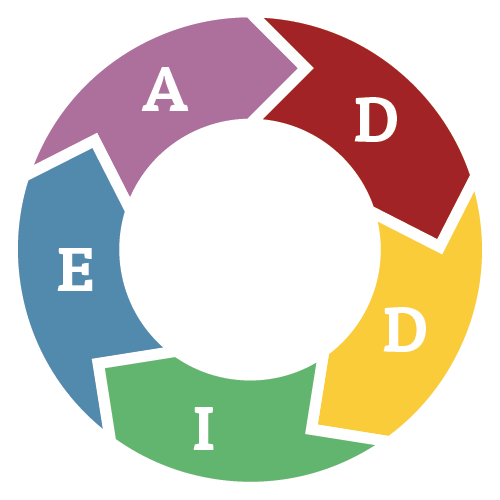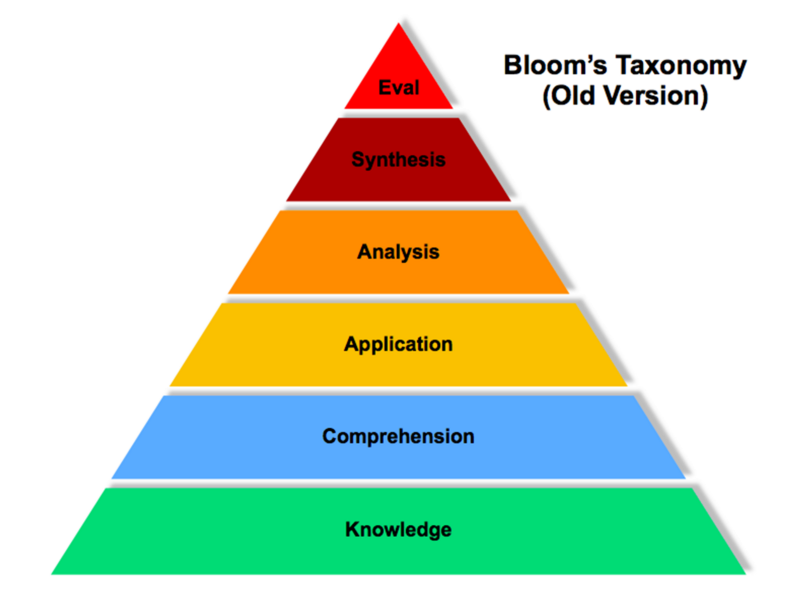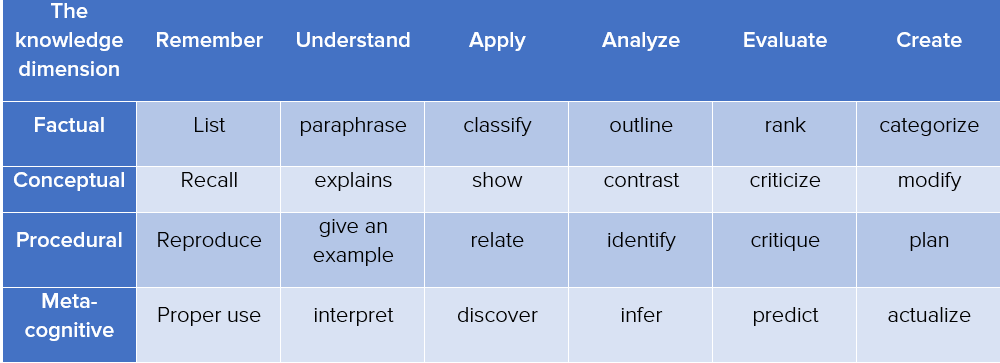Theory in practice
Our new series on ‘Learning Theories has reached it’s second blog here. If you haven’t read the first part, check it out here.
Theories, are what we talk about. But when the time comes, we need actual, practical applications of those theories to get things done.
Instructional models
It was due. We were bound to meet some of the world’s favorite instructional models somewhere along this series. Every learning theory has it’s own creative, alternate counterpart- where it’s actually applied- the practical version of it.
And though not all instructional models are not learning theories in a strict sense; most, if not all, of them are based on valid, accepted learning theories.
Let’s discuss some of the most renowned instructional models the world uses.
ADDIE model
The ADDIE model is a systematic instructional design model consisting of five phases:
(1) Analysis, (2) Design, (3) Development, (4) Implementation, and
(5) Evaluation.
These five phases represent a dynamic, flexible guideline for building effective training and performance support tools.

The five phases of ADDIE, in detail are:
· Analysis
Analysis is all about identifying the learning obstacles, the goals, the objectives, different needs of the learner’s, current knowledge possessed by them, and any other relevant key points related to those.
In the analysis phase, instructional problem is clarified, the instructional goals and objectives are established and the learning environment and learner’s existing knowledge and skills are identified. Below are some of the questions that are addressed during the analysis phase:
Analysis also considers the learning environment, the constraints related, delivery methods, and then proposes a timetable for the project.
· Design
Design is the phase in which the learning objectives are specified. Detailed plans and prototypes are often constructed. The design, user-interface and the content are all determined in this phase.
The design phase deals with learning objectives, assessment instruments, exercises, content, subject matter analysis, lesson planning and media selection. The design phase should be systematic and specific.
Systematic means a logical, orderly method of identifying, developing and evaluating a set of planned strategies targeted for attaining the project’s goals.
Specific means each element of the instructional design plan needs to be executed with attention to details.
· Development
The actual production of the contents and learning materials that are based on the Design phase in done in the Development phase.
The development phase is where the developers create and assemble the content assets that were created in the design phase. Programmers work to develop and/or integrate technologies. Testers perform debugging procedures. The project is reviewed and revised according to any feedback given.
· Implementation
In the Implementation phase, the proposed plan is put into action and a methodology for training the learner and instructor is developed. Also, the learning materials are delivered to the student group and their effectiveness are evaluated.
During the implementation phase, a procedure for training the facilitators and the learners is developed. The preparation of the learners for this phase include training them on new tools (software or hardware).
The facilitators’ training should cover the course curriculum, learning outcomes, method of delivery, and testing procedures.
· Evaluation
During evaluation, both formative and summative forms of evaluations are employed. Although formative evaluation is present in each stage of the ADDIE process, the presence of summative evaluation here contributes tests and other assessments designed for providing statistics and feedbacks from the learners. Revisions are also made necessary in this phase.
Each phase in this paradigm has an outcome that feeds into the next phase in the order.
There are over a hundred variations of the standard ADDIE model and each one was developed to serve specific learner needs depending on the audience. Also, conducting continuous evaluations and examining feedbacks are often cited as ways to improve the standard ADDIE model.
Bloom’s Taxonomy
Bloom’s Taxonomy is a model of hierarchy — a method of classifying educational learning into levels of complexity and specificity. The Bloom’s model consists of three lists that covers the learning objectives in cognitive, effective and sensory domains.

The cognitive domain involves knowledge and the development of mental skills. The recall or recognition of facts, patterns, and concepts that serve in the development of intellectual abilities and skills are categorized under the cognitive domain. There are six major categories of cognitive processes
The cognitive list contains the three lower levels- knowledge, namely the
- Recalling,
- comprehension, and
- application
comprising the basics, and the higher levels includes
- analysis,
- synthesis, and
- evaluation.
The model was named after Benjamin Bloom, who chaired the committee of educators that devised the taxonomy. Also, the Bloom’s model has been updated several times since it was first introduced, to account for the needs of the 21st century.
Revised version of the Bloom’s taxonomy
In Krathwohl and Anderson’s revised version of the Bloom’s taxonomy, they combine the cognitive processes with the first three levels of knowledge to form a matrix. And they also added an another level of knowledge — meta cognition to form a matrix.

These models not so easy to master, and would significantly improve your results. But if you prepare yourself a little better before trying these models- you could unlock the full potential of these techniques.
And as always, we’ll be back with more on learning theories and educational techniques. You could always hit the subscribe button if you want our blogs on your feed.




